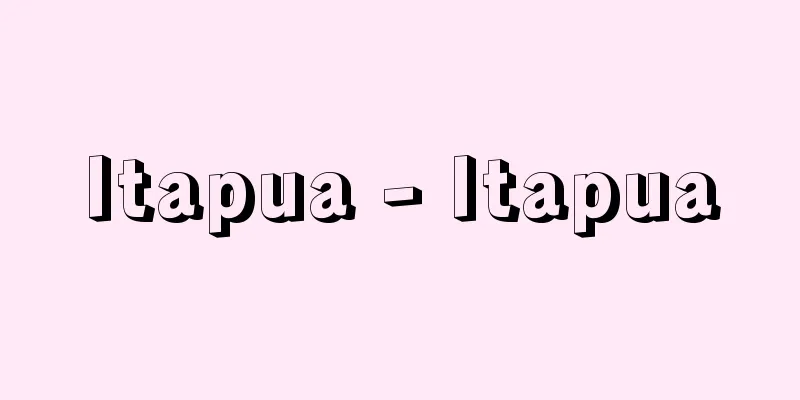Koryuji Temple

|
Located in Hachioka-cho, Uzumasa, Ukyo Ward, Kyoto City, this temple is the head temple of the Omuro school of Shingon Buddhism. It is called Hachioka-san and is commonly known as Uzumasa no Taishi-do. In the past, it was also called Hachioka-dera, Uzumasadera, Hatadera, Hatanokimidera, and Kadonodera. The principal image of the temple is a statue of Prince Shotoku. It is the oldest temple in Yamashiro (Kyoto Prefecture) and, along with Shitennoji and Horyu-ji, is one of the seven great temples in Japan associated with Prince Shotoku. The area around this temple has long been inhabited by the Hata clan, immigrants from other countries. The Nihon Shoki tells us that the head of the Hata clan, Hatano Kawakatsu, received a Buddha statue from Prince Shotoku, and built the temple in 603 (the 11th year of the reign of Empress Suiko) with this statue as the principal image. In the past, the statue was of Maitreya. It was later burned down in 818 (the 9th year of the Kōnin era) and 1150 (the 6th year of the Kūan era), but was rebuilt each time. The current lecture hall (a National Important Cultural Property) was built in 1165 (Eiman 1) and is also known as the Red Hall because its pillars are painted red. Inside the hall, on the central Shumidan (shumidan), there is a seated statue of Amida Nyorai (national treasure) on the left and right, seated statues of Jizo Bodhisattva and Kokuzo Bodhisattva (both National Important Cultural Properties), and behind that, on the left and right of the outer sanctuary, there are two huge statues, a standing statue of Senju Kannon and a standing statue of Acalanatha (both National Treasures). The main hall of Katsuramiya-in (national treasure) on the west side of the temple grounds is a single-story octagonal hall (in the Yumedono style) with a beautiful cypress bark roof, a Kamakura-era structure. The hall houses a statue of Prince Shotoku and other statues. The Jōgūōin Prince Hall was built in 1730 (Kyoho 15) and houses the principal image of the prince, said to have been made by the prince himself. Its doors are opened to the public every year on November 22nd. The Reihoden Hall, built in 1922 (Taishō 11) to safeguard the temple's treasures, houses many cultural assets, including Buddhist paintings, statues, crafts and ancient documents. Of these, the wooden half-seated Maitreya Bodhisattva statue "Hokan Maitreya" (National Treasure), said to have been the principal image when the temple was first built, is made from a single piece of red pine and is renowned for its beautiful smile and half-seated statue lost in contemplation. The other statue, a half-seated Maitreya Bodhisattva (national treasure), is made from a single piece of camphor wood and is also known as "Crying Maitreya" or "Hokei Maitreya" due to its crying expression, and is an exotic statue. In addition to the above, there are sculptures such as the twelve heavenly generals, one volume of the "Koryu-ji Engi Zaizaicho" (Horyu-ji Engi Zaizaicho), which tells of the scale of Koryuji Temple in the Heian period, and one volume of the "Koryu-ji Zaizai Kotai Jitsurokucho" (Horyu-ji Zaizai Kotai Jitsurokucho), which are all national treasures, as well as numerous paintings, sculptures, and art and craft items that are designated as important national cultural properties, and the temple is known as a treasure trove of cultural assets. The Uzumasa Ushi Matsuri, a festival held at Osake Shrine located within the shrine grounds (on the night of October 12th), is famous as a bizarre festival in which the god Matara, wearing a unique mask, rides on a bull and parades through the light of torches and bonfires. [Hiromune Mashiba] "Pilgrimage to Ancient Temples in Japan: Kyoto 13, Koryuji Temple" (1977, Tankosha) [Reference] |Source: Shogakukan Encyclopedia Nipponica About Encyclopedia Nipponica Information | Legend |
|
京都市右京区太秦(うずまさ)蜂岡(はちおか)町にある真言宗御室(おむろ)派大本山。蜂岡山(はちおかざん)と号し、俗に太秦の太子堂といわれる。古くは蜂岡寺、太秦寺(うずまさでら)、秦寺(はたでら)、秦公寺(はたのきみでら)、葛野寺(かどのでら)などともいわれた。本尊は聖徳太子像。山城(やましろ)(京都府)最古の名刹(めいさつ)で、四天王寺、法隆寺などとともに聖徳太子ゆかりの日本七大寺の一つ。当寺一帯は古くから渡来人の秦氏が住んでいた地域で、その長、秦河勝(はたのかわかつ)が聖徳太子から仏像を賜り、それを本尊として603年(推古天皇11)に建立されたと『日本書紀』に伝える。古くは弥勒(みろく)像が本尊であった。その後、818年(弘仁9)と1150年(久安6)に焼失したが、そのつど再建された。 現在の講堂(国重要文化財)は1165年(永万1)建立のもので、柱が朱塗りのため赤堂ともいう。堂内中央須弥壇(しゅみだん)には、中央に阿弥陀如来坐像(あみだにょらいざぞう)(国宝)、左右に地蔵菩薩(じぞうぼさつ)坐像と虚空蔵(こくうぞう)菩薩坐像(2体とも国重要文化財)の両脇侍(わきじ)があり、その後方外陣(げじん)左右に千手観音(せんじゅかんのん)立像と不空羂索(ふくうけんじゃく)観音立像(いずれも国宝)の2体の巨像が安置されている。境内の西方にある桂宮院(けいきゅういん)本堂(国宝)は単層の八角円堂(夢殿形式)、檜皮葺(ひわだぶ)きの美しい屋根をもつ鎌倉時代の建築である。堂内には聖徳太子像などを安置する。上宮王院(じょうぐうおういん)太子殿は1730年(享保15)の建立で、堂内には太子自作と伝える本尊太子像を安置し、毎年11月22日に開扉される。寺宝の保管を図るため1922年(大正11)に建てられた霊宝殿には、仏画、仏像、工芸、古文書など多くの文化財が保存されている。なかでも、創建当初の本尊といわれる木造弥勒菩薩半跏(はんか)像「宝冠(ほうかん)弥勒」(国宝)は、赤松材を用いた一木造(いちぼくづくり)で、美しい微笑をたたえ思索にふける半跏思惟(しい)像として名高い。もう1体の弥勒菩薩半跏像(国宝)は楠の一木造で、泣いているような表情のため「泣き弥勒」、あるいは「宝髻(ほうけい)弥勒」とも称され、異国情緒豊かな像である。以上のほかに十二神将立像などの彫刻や、平安時代における広隆寺の規模を伝える『広隆寺縁起資財帳』1巻、『広隆寺資財交替実録帳』1巻などの国宝のほか、数多くの国重要文化財の絵画、彫刻、美術工芸品があり、文化財の宝庫として知られている。 境内にある大酒(おおさけ)神社の祭礼(10月12日夜)「太秦の牛祭」は、松明(たいまつ)や篝火(かがりび)で照らされるなかを特異な面をつけた摩多羅(またら)神が牛に乗って練る奇祭として名高い。 [眞柴弘宗] 『『日本古寺巡礼 京都13 広隆寺』(1977・淡交社)』 [参照項目] |出典 小学館 日本大百科全書(ニッポニカ)日本大百科全書(ニッポニカ)について 情報 | 凡例 |
<<: Hwangryong-sa-ji Temple Site - Hwangryong-sa-ji (English spelling)
>>: Xing-long Ruins (English name)
Recommend
Batrachospermum virgatum (English name) Batrachospermum virgatum
…[Mitsuo Chihara]. . . *Some of the terminology t...
Trigault, N. (English spelling) TrigaultN
…A rhyming book written by the French Jesuit miss...
Tango Mountains - Tangosanchi
A mountain range that stretches from northwest Ky...
Arnim, Achim von
Born January 26, 1781 in Berlin [Died] January 21,...
Orthogenesis
When fossils belonging to a certain phylogenetic ...
Ohlin, LE (English spelling) OhlinLE
… AK Cohen's "delinquency subculture the...
Aconcagua [Mountain] - Aconcagua
A mountain in South America, straddling the border...
River density - Kasenmitsudo
…For example, when faults or rock joints control,...
Pinched nerve - pinched nerve
A type of armrest . A device that is placed in fro...
Spherical cam - Spherical cam
…A cam similar to a cylindrical cam is a conical ...
Pulsatilla chinensis (English spelling) Pulsatilla chinensis
…[Michio Tamura]. … *Some of the terminology that...
Sekidera Komachi - Sekidera Komachi
Noh piece. Third piece. Five-school contemporary ...
Three songs - Sankyoku
〘Noun〙① A term for Japanese music, meaning an ense...
Karl XIV Johan
1763‐1844 King of Sweden and Norway. Reigned 1818-...
Chinese Praise - Kansan
A type of Buddhist music called chanting. The lyri...



![Etymologicum magnum [Latin]](/upload/images/67cc16768becb.webp)





